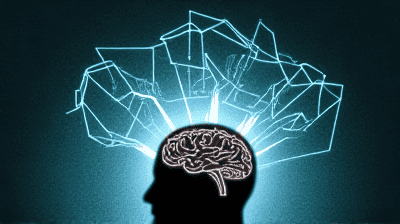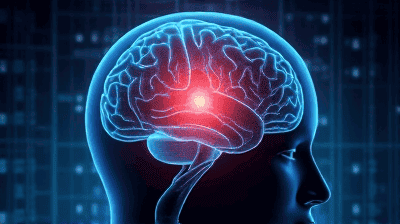
Anxiety is a universal human experience. It can manifest in various forms, from fleeting feelings of nervousness before a big presentation to debilitating anxiety disorders that interfere with daily life. Anxiety disorders are among the most common mental health conditions, affecting millions of individuals worldwide. Understanding why some brains are wired for constant worry can shed light on the biological, psychological, and environmental factors that contribute to these disorders.
Understanding Anxiety
What is Anxiety?
Anxiety is a natural response to perceived threats or stressors. It is characterized by a combination of physical, emotional, and cognitive symptoms, including:
Physical Symptoms: Increased heart rate, sweating, trembling, dizziness, muscle tension, and fatigue are common physical reactions to anxiety.
Emotional Symptoms: Anxiety often involves feelings of apprehension, fear, or dread.
Cognitive Symptoms: Anxious individuals may experience racing thoughts, difficulty concentrating, and excessive worrying about potential negative outcomes.
Anxiety can be beneficial in certain situations, acting as a motivator to prepare for challenges. However, when anxiety becomes chronic and overwhelming, it can hinder daily functioning and lead to anxiety disorders.
Types of Anxiety Disorders
Anxiety disorders encompass a range of conditions, each with its unique features. The most common types include:
Generalized Anxiety Disorder (GAD): Characterized by excessive and uncontrollable worry about a variety of everyday issues. Individuals with GAD often find it challenging to relax and may experience physical symptoms such as muscle tension and fatigue.
Panic Disorder: This disorder involves recurrent panic attacks—sudden periods of intense fear or discomfort that peak within minutes. Symptoms may include palpitations, shortness of breath, chest pain, and feelings of impending doom.
Social Anxiety Disorder (Social Phobia): Individuals with social anxiety disorder fear social situations and worry about being judged or embarrassed. This fear can lead to avoidance of social interactions, impacting relationships and quality of life.
Specific Phobias: These are intense, irrational fears of specific objects or situations, such as heights, spiders, or flying. The fear response is disproportionate to the actual threat posed by the phobic stimulus.
Obsessive-Compulsive Disorder (OCD): OCD is characterized by intrusive thoughts (obsessions) that lead to repetitive behaviors or mental acts (compulsions) performed to reduce anxiety associated with the obsessions.
Post-Traumatic Stress Disorder (PTSD): PTSD can develop after experiencing or witnessing a traumatic event. Individuals with PTSD may experience flashbacks, nightmares, and severe anxiety related to reminders of the trauma.
The Neuroscience of Anxiety

The Brain's Stress Response System
Understanding how the brain processes and responds to anxiety is crucial for grasping why some individuals are more prone to anxiety disorders. The brain's stress response system plays a significant role in this process.
The Amygdala: This almond-shaped structure is critical for processing emotions, particularly fear. When a potential threat is detected, the amygdala activates the body's stress response, triggering the release of stress hormones.
The Prefrontal Cortex: The prefrontal cortex is responsible for higher-order thinking, decision-making, and emotional regulation. In individuals with anxiety disorders, the prefrontal cortex may have impaired functioning, leading to difficulties in distinguishing between real and perceived threats.
The Hippocampus: Involved in memory formation and learning, the hippocampus also plays a role in contextualizing fears. Chronic stress can lead to atrophy of the hippocampus, affecting the processing of memories and increasing anxiety.
The HPA Axis: The hypothalamic-pituitary-adrenal (HPA) axis is a key part of the body's stress response system. When the amygdala perceives a threat, it signals the hypothalamus to release corticotropin-releasing hormone (CRH). This, in turn, stimulates the pituitary gland to release adrenocorticotropic hormone (ACTH), which prompts the adrenal glands to produce cortisol, the primary stress hormone. Dysregulation of the HPA axis can lead to elevated cortisol levels, contributing to anxiety disorders.
Neurotransmitters and Anxiety
Neurotransmitters are chemical messengers that facilitate communication between neurons. Several neurotransmitters are implicated in anxiety disorders:
Serotonin: Often referred to as the "feel-good" neurotransmitter, serotonin plays a crucial role in regulating mood, appetite, and sleep. Low levels of serotonin are associated with increased anxiety and depressive symptoms.
Gamma-Aminobutyric Acid (GABA): GABA is the primary inhibitory neurotransmitter in the brain. It functions to dampen neural activity and promote relaxation. Individuals with anxiety disorders may exhibit reduced GABAergic activity, leading to heightened arousal and anxiety.
Norepinephrine: This neurotransmitter is involved in the body's stress response and arousal. Elevated levels of norepinephrine have been linked to anxiety and the physical symptoms associated with it.
Dopamine: While primarily associated with the brain's reward system, dopamine also plays a role in motivation and mood regulation. Dysregulation of dopamine pathways can contribute to anxiety symptoms.
Genetic Factors
Research suggests that genetics can influence an individual's susceptibility to anxiety disorders. Key points include:
Heritability: Family and twin studies indicate that anxiety disorders have a heritable component, with estimates suggesting that genetic factors may account for 30 to 50 percent of the risk for developing anxiety disorders.
Gene-Environment Interactions: While genetics can predispose individuals to anxiety, environmental factors such as trauma, stress, and adverse life experiences can activate or exacerbate these genetic vulnerabilities.
Environmental Triggers
Environmental factors play a significant role in the development and exacerbation of anxiety disorders. Some key influences include:
Childhood Environment: Adverse childhood experiences such as abuse, neglect, or parental instability can lead to alterations in the stress response system and increase the risk of anxiety disorders later in life.
Chronic Stress: Ongoing stressors, such as financial difficulties, job-related stress, or relationship problems, can contribute to the development of chronic anxiety.
Social Environment: An individual's social environment, including supportive relationships and community connections, can impact their resilience to anxiety. Conversely, social isolation can increase the risk of developing anxiety disorders.
The Impact of Anxiety Disorders
Effects on Daily Life
Anxiety disorders can significantly interfere with daily functioning and quality of life. Some common effects include:
Impaired Social Functioning: Social anxiety disorder can lead individuals to avoid social interactions, resulting in isolation and loneliness.
Difficulty in Work or School: Anxiety can impact concentration, decision-making, and productivity, leading to challenges in work or academic settings.
Physical Health Consequences: Chronic anxiety can contribute to physical health problems, including cardiovascular issues, gastrointestinal disorders, and chronic pain. The stress response can manifest physically, leading to heightened muscle tension and fatigue.
Comorbid Conditions: Anxiety often co-occurs with other mental health disorders, such as depression, substance use disorders, and eating disorders. This comorbidity can complicate treatment and recovery.
Economic Impact
Anxiety disorders also have significant economic implications. The costs associated with anxiety disorders include:
Direct Costs: These encompass healthcare expenses related to treatment, medication, and therapy.
Indirect Costs: Indirect costs arise from lost productivity due to absenteeism, presenteeism (attending work while not functioning at full capacity), and unemployment.
Societal Impact: The overall societal burden of anxiety disorders, including healthcare costs and lost economic productivity, can amount to billions of dollars annually.
Diagnosis of Anxiety Disorders

Clinical Assessment
Diagnosing anxiety disorders typically involves a comprehensive clinical assessment conducted by a mental health professional. Key components include:
Clinical Interviews: Healthcare providers conduct structured or semi-structured interviews to gather information about the individual's symptoms, duration, and impact on daily functioning.
Standardized Assessment Tools: Various validated questionnaires, such as the Generalized Anxiety Disorder 7-item scale (GAD-7) and the Social Anxiety Questionnaire, may be used to assess the severity of symptoms.
Rule Out Other Conditions: It is essential to rule out other potential medical or psychological conditions that may mimic anxiety symptoms, such as thyroid disorders or substance use.
Neuroimaging and Biomarkers
While anxiety disorders primarily rely on clinical assessment for diagnosis, neuroimaging research is helping to identify potential biomarkers associated with anxiety. Studies utilizing techniques such as functional MRI (fMRI) have found:
Brain Activity Patterns: Abnormalities in brain activity within regions such as the amygdala and prefrontal cortex may correspond with the severity of anxiety symptoms.
Potential Biomarkers: Ongoing research is exploring the identification of biomarkers, including inflammatory markers and genetic variations, that may aid in diagnosing anxiety disorders and predicting treatment responses.
Treatment Approaches for Anxiety Disorders
Psychotherapy
Psychotherapy, or talk therapy, is a cornerstone of treatment for anxiety disorders. Several effective psychotherapeutic approaches include:
Cognitive-Behavioral Therapy (CBT): CBT is the most widely used psychotherapy for anxiety disorders. It focuses on identifying and challenging negative thought patterns and behaviors, helping individuals develop coping strategies and skills to manage anxiety.
Exposure Therapy: A subset of CBT, exposure therapy involves gradual and controlled exposure to feared situations or stimuli. This approach helps individuals gradually confront and reduce their anxiety responses.
Acceptance and Commitment Therapy (ACT): ACT encourages individuals to accept their thoughts and feelings rather than trying to control them. This therapy promotes mindfulness and values-based living.
Pharmacotherapy
In some cases, medication may be necessary to manage anxiety symptoms. Common classes of medications include:
Selective Serotonin Reuptake Inhibitors (SSRIs): SSRIs are frequently prescribed for anxiety disorders and work by increasing serotonin levels in the brain. Examples include fluoxetine, sertraline, and escitalopram.
Serotonin-Norepinephrine Reuptake Inhibitors (SNRIs): SNRIs, such as venlafaxine and duloxetine, are also effective in treating anxiety by affecting both serotonin and norepinephrine levels.
Benzodiazepines: These medications may be prescribed for short-term relief of acute anxiety symptoms but carry the risk of dependence and should be used with caution.
Buspirone: Buspirone is an anxiolytic medication that can help manage anxiety symptoms without the sedative effects associated with benzodiazepines.
Lifestyle Interventions
In addition to psychotherapy and medication, lifestyle changes can play a crucial role in managing anxiety:
Regular Exercise: Physical activity has been shown to reduce anxiety symptoms and improve mood by increasing the release of endorphins and promoting relaxation.
Mindfulness and Relaxation Techniques: Practices such as mindfulness meditation, yoga, and deep breathing can help calm the mind and reduce anxiety.
Sleep Hygiene: Prioritizing good sleep practices is essential for managing anxiety. Establishing a consistent sleep schedule and creating a calming bedtime routine can improve sleep quality.
Nutrition: A balanced diet rich in whole foods, fruits, vegetables, and omega-3 fatty acids can support overall mental health. Reducing caffeine and sugar intake may also help alleviate anxiety symptoms.
Future Directions in Anxiety Disorder Research

Neurobiological Research
Ongoing research into the neurobiology of anxiety disorders aims to uncover more about how the brain processes fear and anxiety. Possible areas of exploration include:
Genetic Studies: Investigating genetic markers associated with anxiety may help identify individuals at higher risk and inform targeted therapies.
Neurotransmitter Dynamics: Studying the interplay between different neurotransmitters can provide insight into the mechanisms underlying anxiety and inform new treatment approaches.
Neuroimaging Advancements: Improvements in neuroimaging techniques may allow researchers to better understand the neural circuits involved in anxiety disorders.
Integrative Approaches
Combining traditional treatments with alternative therapies may enhance the effectiveness of anxiety disorder management. Potential avenues include:
Mind-Body Interventions: Techniques such as mindfulness-based stress reduction (MBSR) and yoga therapy have shown promise in reducing anxiety symptoms.
Psychedelic Research: Emerging studies exploring the therapeutic use of psychedelics, such as psilocybin and MDMA, suggest potential for treatment-resistant anxiety disorders.
The Role of Technology
The integration of technology into mental health treatment is an exciting development. Future possibilities include:
Teletherapy: Remote therapy options can increase accessibility for individuals with anxiety disorders, allowing them to receive treatment from the comfort of their homes.
Mental Health Apps: Mobile applications designed for anxiety management can provide resources, tracking, and exercises to support self-help efforts.
Conclusion
Anxiety disorders are complex conditions that intertwine biological, psychological, and environmental factors. Understanding why some brains are wired for constant worry sheds light on the mechanisms that drive these disorders and the challenges individuals face. Through ongoing research, effective treatments, and integrative approaches, there is hope for improving the lives of those affected by anxiety disorders.
Recognizing the multifaceted nature of anxiety can lead to more compassionate treatment methods and a greater understanding of the human experience. As research continues to evolve, we can look forward to innovative therapies and support systems that empower individuals to manage their anxiety and lead fulfilling lives.








